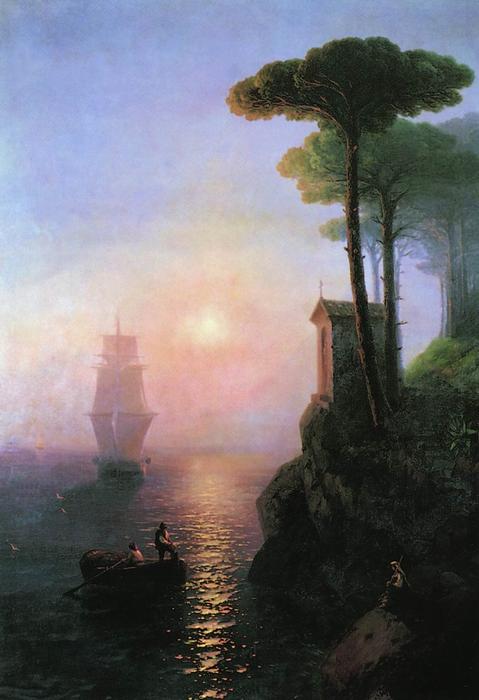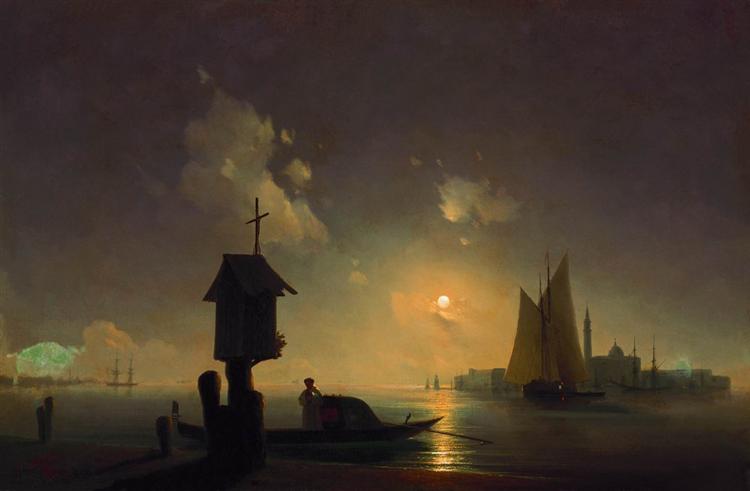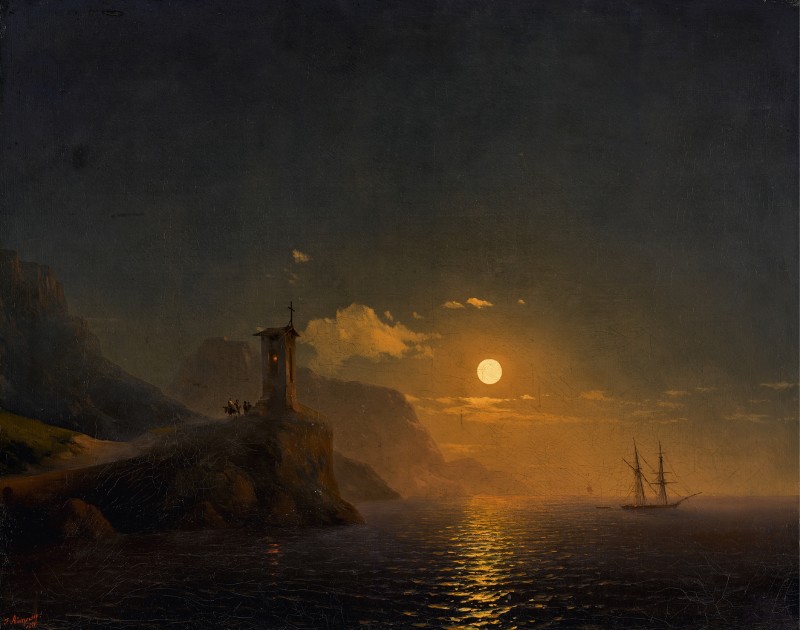Ivan Aivazovsky [1817 – 1900] was a Russian painter and one of the greatest masters of marine art who is predominately known for his masterpieces that depict seascapes: coastlines and seas. As a child growing up in Feodosia (Crimea), Aivazovsky fell in love with the sea (the Black Sea) and this passion for water and all things marine never left him. Below is just a tiny fraction of his paintings, where I focus on the themes of “sea chapels” and shipwrecks, and Aivazovsky is also known for depicting Armenian themes and battles. Some of my other favourite Aivazovsky’s paintings include his depictions of the Bay of Naples and Constantinople.



I. Clock-wise from the upper left-hand corner: Sea View with Chapel [1845], Misty Morning in Italy [1864] and Chapel by the Coast on a Moonlit Night [1851]
These paintings of chapels by the sea create an impression of an idyllic scenery, a harmonic fusion of the man’s spirituality/religion and nature’s wonder. It is no wonder Aivazovsky’s paintings are often compared to beautiful poetry. Chapels by the sea were not uncommon. Sailors have always been a religious and superstitious class of people, and for a good reason. Sea is one of the most unpredictable environments one may find themselves in, and, in past times, sea-travel was fraught with various difficulties, culminating in disasters and death with frequency which is staggering by today’s standards. Thus, the protection of sailors and safe journeying on sea were issues of paramount importance. Chapels near the sea must have served a welcoming sight, symbolising the man’s “illusionary” control over the uncontrollable, and they often contain statues of saints, which only leave chapels on special days and festivals. Both Charles Dickens (in American Notes [1842]) and Herman Melville (in Moby-Dick [1851]) were fascinated by “sea chapels”, and patron saints of sailors and marine travel include St Brendan, a celebrated traveller, whose worship promises safe passage, St. Christopher, the legendary patron saint of travel, and St Erasmus, an ex-Bishop, who suffered much for his faith. In past times, such chapels also worked similar to lighthouses, signalling the way to the bay.

